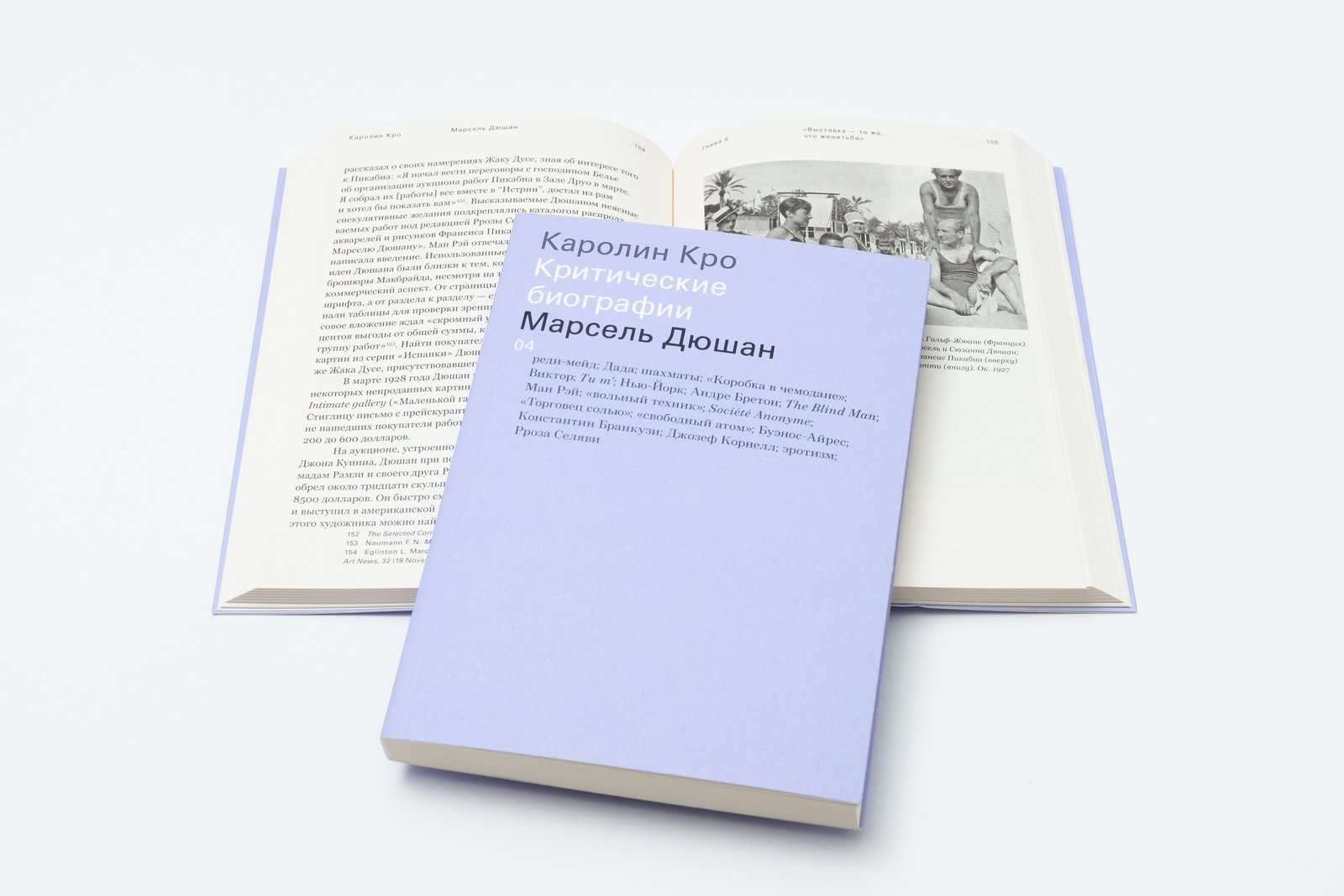Portrait of an artist who probably influenced the art of the twentieth century more than any other, but used to say that among all arts he preferred the art of playing chess.
The introductory pages in the book are dedicated to Duchamp’s extreme passion for chess and the scandalous forms this could take—for instance, a game in public with a naked lady (Eve Babitz, in Pasadena, 1963). Following this, the narration returns to a linear flow, describing the artist’s childhood in a “respectable bourgeois family” and his first artistic experiments among the avant-garde artists from the Puteaux group, which included Francis Picabia and Guillaume Apollinaire who later became Duchamp’s close friends.
The shift from cubist painting to three-dimensional objects was radical, and as early as in 1913 the first ‘readymade’ saw the light—Bicycle Wheel, mounted upside down on a wooden stool: “Thus Duchamp created a new formula of an artwork: from now on, this is not a pale copy of the reality, but something taken directly from the reality.” Two years later, at the Armory Show in New York, “Duchamp was the most well-known Frenchman after Napoleon and Sarah Bernhardt.’”
Inclination towards “works of art that otherwise would not be art” is characteristic not only of Duchamp’s creative work, but also his life. Apart from the Wheel and the more famous Fountain (1917), he created readymades from what happened to be at hand and gave them to his friends as gifts with ingenious titles. Paris Air (1919) turned out to be especially elegant, presented to Walter Arensberg. Whereas one of the Bottle Racks, bought for three dollars by Robert Rauschenberg, the artist titled D’aprés Marcel Duchamp (After Marcel Duchamp).
One of the most breathtaking chapters is dedicated to the artist’s curatorial projects, which he himself called “a game of art” and explained his own role in it as that of a “magician.” Among these projects was Duchamp’s bold and innovative design of the First International Surrealist Exhibition (1938): the dark space of Beaux-Arts gallery in Paris smelled of freshly ground coffee, the speaker was on, and the visitors moved in the darkness, armed with flashlights, “in case they wanted to see something” (idea and quotation by Man Ray). The first exhibition of Wassily Kandinsky in America and the first solo exhibition of Alexander Arkhipenko also took place due to Duchamp’s initiative as curator.
“Indifference to the beauty of an artwork” in Duchamp met with a true passion towards word play. His desire to totally do away with the differences between good and bad tastes revealed in him an ironic intellectual and a dandy. This image of Duchamp has long been rooted in the history of art, and Caroline Cros does not intend to argue with or significantly change this view. The most important feature of her book is most probably the right choice of tone. A light and easy style and a certain detachment in narration best fit the attitude of the artist towards himself and the world, which he expressed in particular in his remark on Picabia’s death: “Francis, see you soon. Marcel.”






